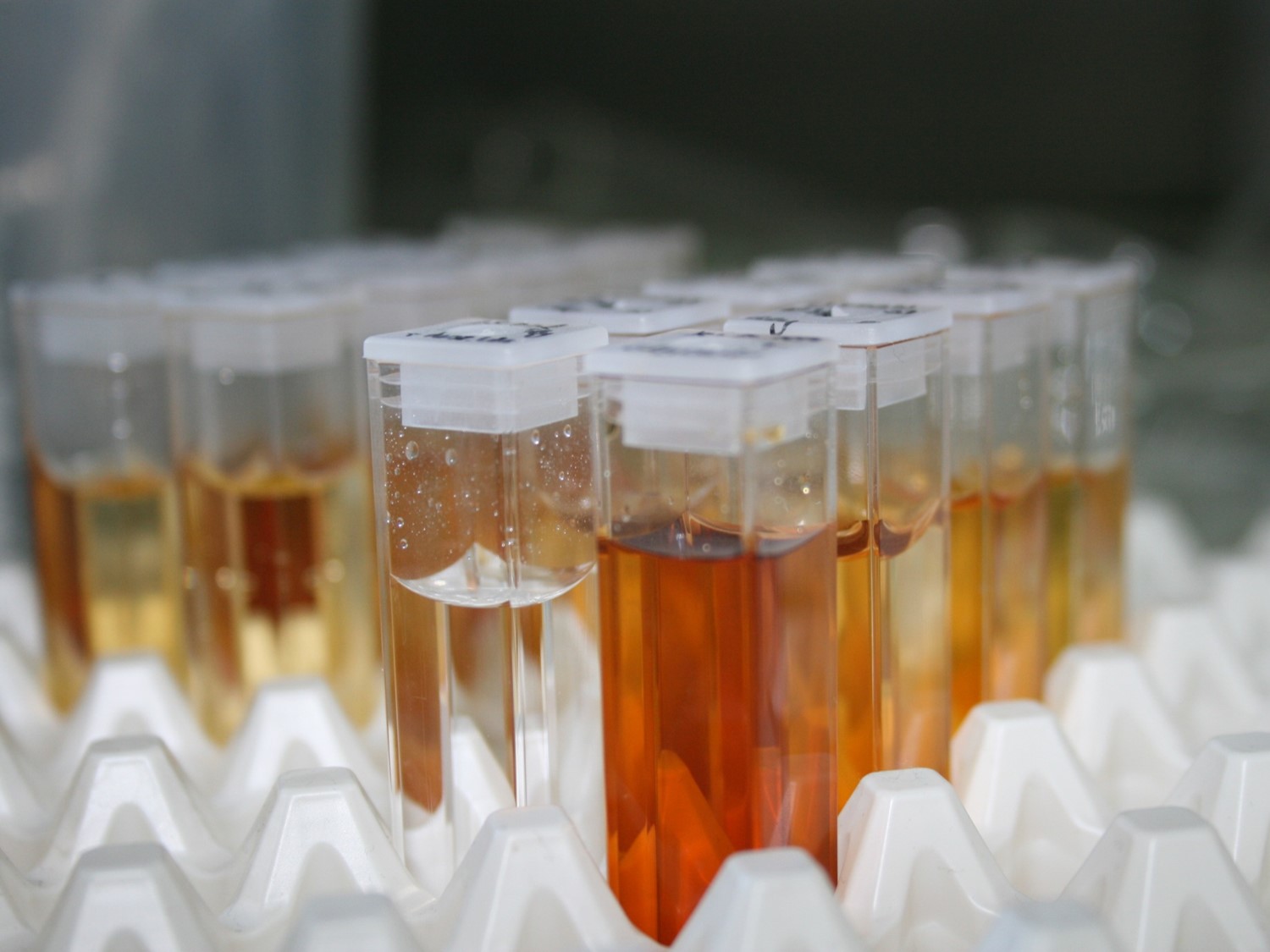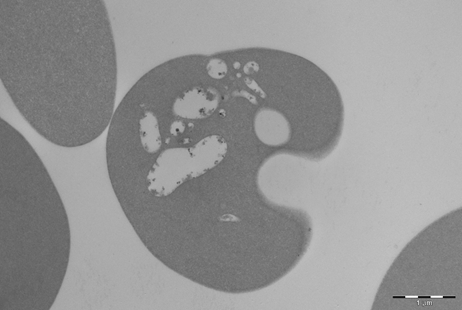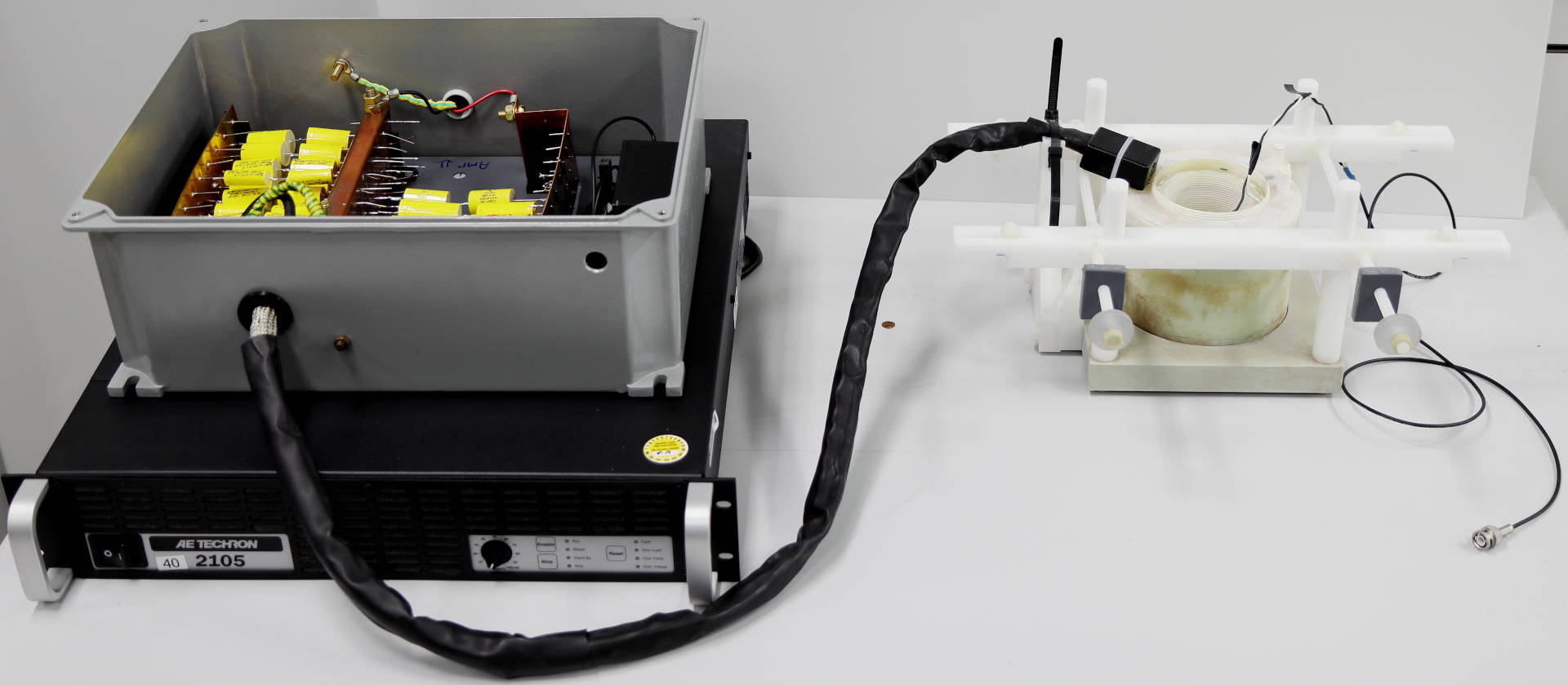Tracer Technologies

Tracers are based on superparamagnetic iron-oxide nanoparticles (SPIONs) which have highly biocompatible properties and are thus very promising candidates for biomedical applications - tracers are the most integral part of Magnetic Particle Imaging (MPI). When functionalized, tracers can be useful in both diagnostic as well as therapeutic applications, such as hyperthermia, cell labelling or drug delivery. They can also be used for construction of medical catheters and micro-machines that allow visualization, and even manipulation, in an MPI scanner.
Fraunhofer IMTE specializes in the synthesis of biocompatible SPIONs which consist of an iron-containing core and a non-iron shell. Different materials can be selected for constructing the shell, depending on the desired biocompatibility properties and stability of the tracer over time. Dextran and silicon dioxide as shell materials are not only reactive but can easily be coupled with florescent dyes or drugs. Fraunhofer IMTE works on the synthesis of SPIONs for various applications such as MPI, hyperthermia and cell labeling, as well as media for further functionalization, nucleation and growth of nanoparticles.
Find out more about our services regarding Tracer Development, Instrumentation and Magnetic Systems.
Functionalization of SPIONs

Different approaches for functionalization of SPIONs are currently being investigated at IMTE. The coupling of SPIONs with a fluorescent dye not only enables the tracking of the diffusion path of administered SPIONs but can be used to study the metabolic pathways of these nanoparticles inside a cell.
One example is the encapsulation of the fluorescence-marked SPIONs in red blood cells. This is an interesting application because the SPIONs, after being injected into a living organism, are usually quickly recognized as foreign bodies and directly transported from the bloodstream into the liver or spleen to be broken down. However, when encapsulated in red blood cells, the SPIONs are no longer identified as foreign. If the red blood cells are not damaged, the encapsulated SPIONs can circulate within the patient's vascular system for approx. 120 days (life of a healthy red blood cell). This method could potentially used for drug delivery or other applications which require longer particle lifetimes.
Devices for SPION characterization

Fraunhofer IMTE has expertise in the development of devices for characterizing the magnetic properties of the synthesized SPIONs referred to as magnetic particle spectrometer (MPS). The measurements usually consist of amplitude and phase spectra which can in turn be used to calculate the magnetization curve (also known as hysteresis) as well as geometrical properties such as the diameter of the SPIONs and hydrodynamic diameter. Moreover, it is a powerful tool to study the effects of different parameters on the response of SPIONs, such as temperature and binding status. Fraunhofer IMTE works on the design and development of different MPS systems such as a zero-dimensional MPS without offset field, a two-dimensional MPS for simulating a Lissajous trajectory, a three-dimensional MPS (Fuzzy-Amp) to emulate magnetic fields inside an MPI scanner, and a table-top version. These characterization devices help in understanding the physical as well as magnetic properties of SPIONs and can directly support the development of new tracer materials.
While MPS measurements are usually performed to characterize synthesized SPIONs, the synthesis process itself is left completely unobserved. A novel device – INSPECT – was recently developed to fill this gap. It is conceptually based on a zero-dimensional MPS but can track the nucleation and growth of the SPIONs undergoing a synthesis in real-time by measuring the change in the magnetic moment of the SPIONs. INSPECT is a low-cost device with low instrumentation complexity that does not require any special sample chambers or experimentation setup to conduct chemical reactions as compared to X-ray scattering and Transmission electron microscopy. Current research at Fraunhofer IMTE focuses on enhancing INSPECT to a continuous flow synthesis device to perform continuous micro-synthesis and eventually provide more control of the size distribution of SPIONs. In the future, artificial intelligence will also be integrated to identify optimal synthesis parameters for large scale production of tracer materials for MPI and provide real-time quality analysis for the produced tracer materials.